Use these tactics
Let’s explore these tactics with an example: Pip’s Cafe
Your task is to develop an app for Pip’s Cafe for pre-ordering coffee, and determine if this innovation is necessary. See below how Pip’s Cafe uses these tactics to solve this challenge.
1
Use Time Machine to uncover hidden hopes and fears
Use Time Machine to uncover hidden hopes and fears
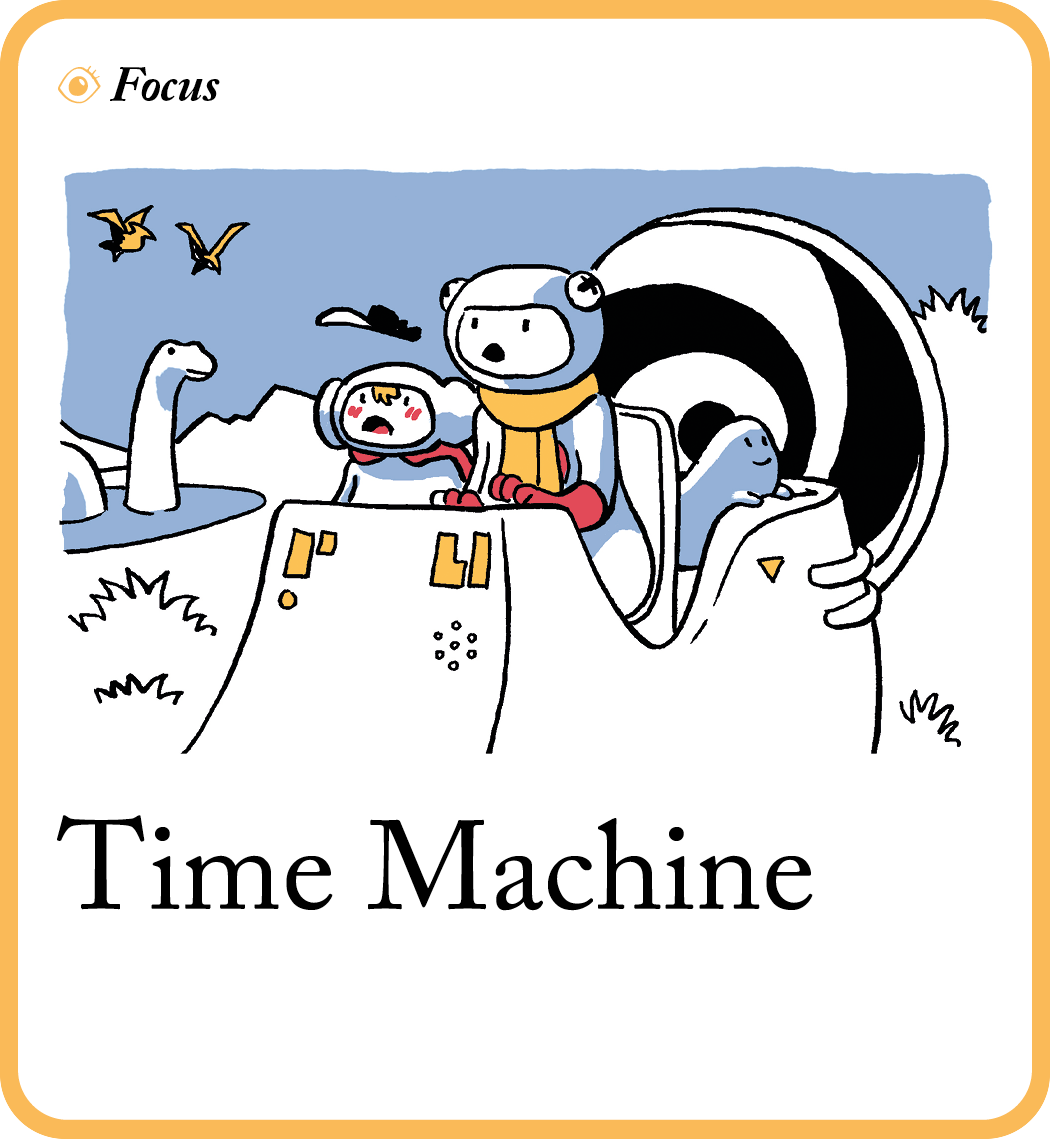

🧠 What’s the goal? Predict how an idea might fail – so that you can avoid that future – by taking a trip in an imaginary time machine.
👀 Why it’s important: We all plan for our ideas to work out well. But few plans work as expected. If you’re wrong about an important detail, you’ll wish you’d known sooner. When you look backwards from a certain failure, you’ll identify risks that are hard to see looking forwards.
💡 Tip: use this method when you have a clear idea and are making a plan for how to work on it.
Instructions
- In the example we use below, the owner of coffee shop just wants the pre-order coffee app built; you as the app designer have doubts and think it needs research. Rather than butting heads with the owner, you do this activity with the owner and baristas – this cracks open the door to everyone releasing it could also not work.
- Tell the group “We get in a time machine. When the door opens, it’s <date> (when you’d see the results of your idea) and it’s gone better than we ever dreamed! Look around, what’s it like?”.
a. Ask everyone to write down what they can see and hear in this great future. One description per yellow sticky. The example we are using in this tactic is about building an app for a coffee shop that allows customers to pre-order their coffee the day before. (3-6 minutes)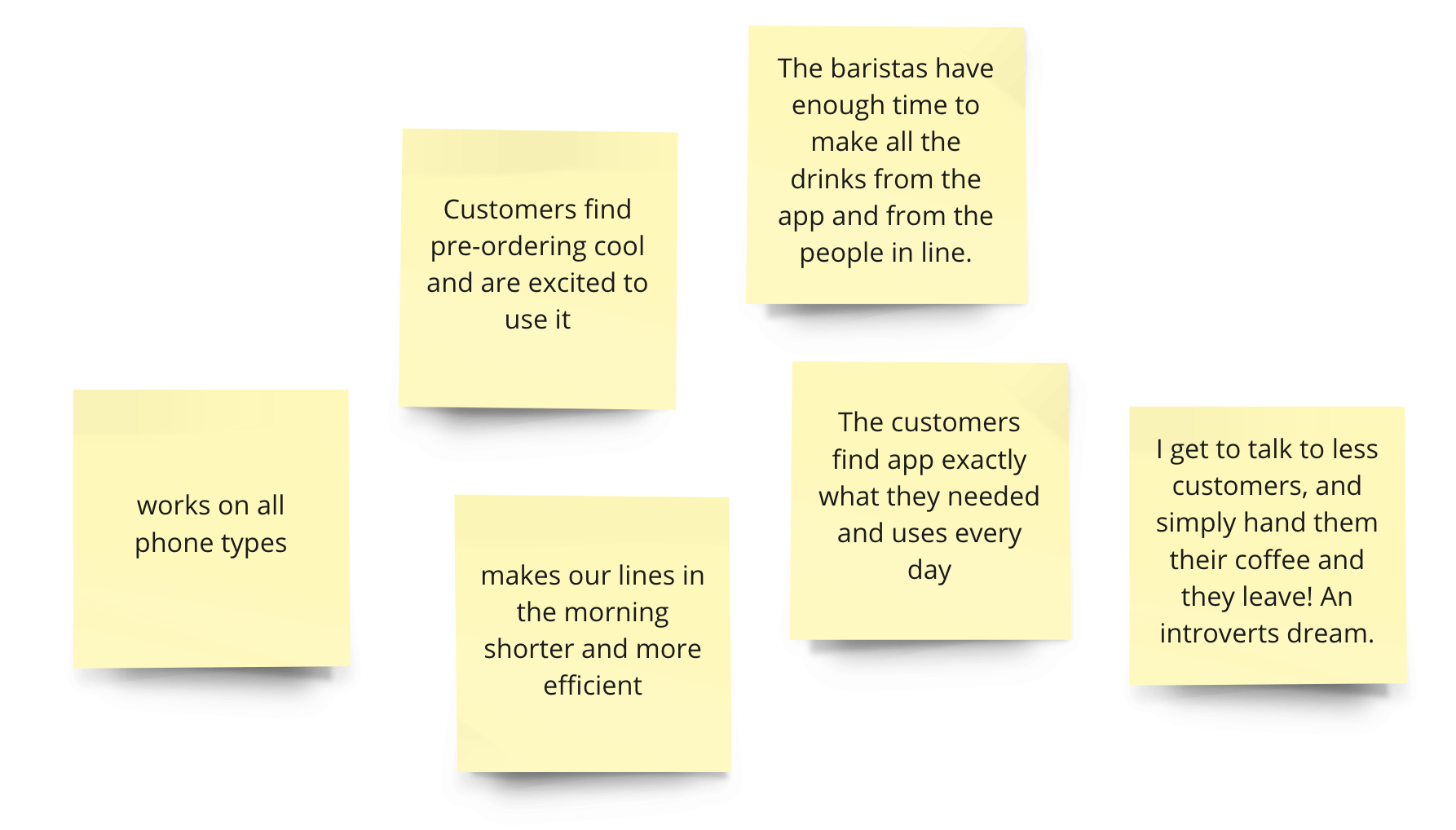
b. Gather all the stickies, then ask the group to quietly stack together vertically the ones that have a similar theme. (5-10 minutes)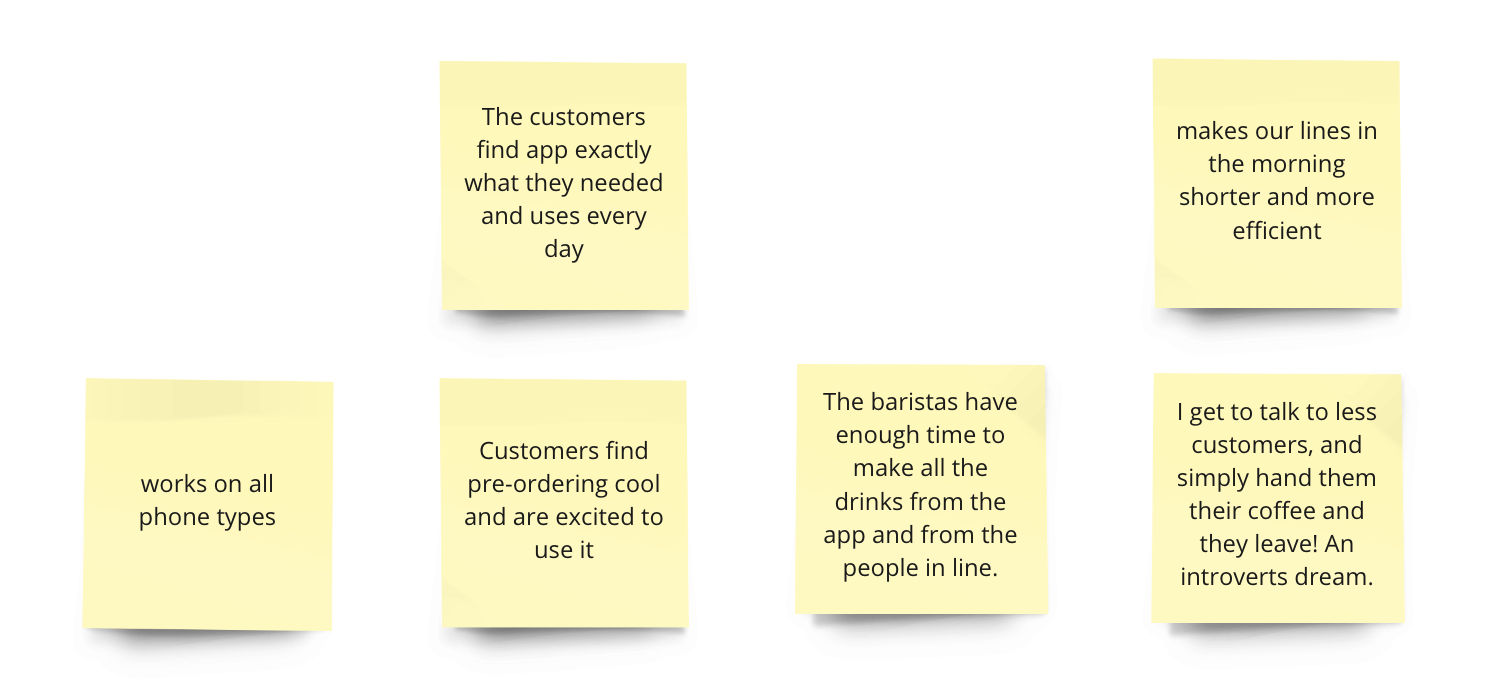
c. Summarise each cluster in 1–5 words on a green sticky. (4-6 minutes)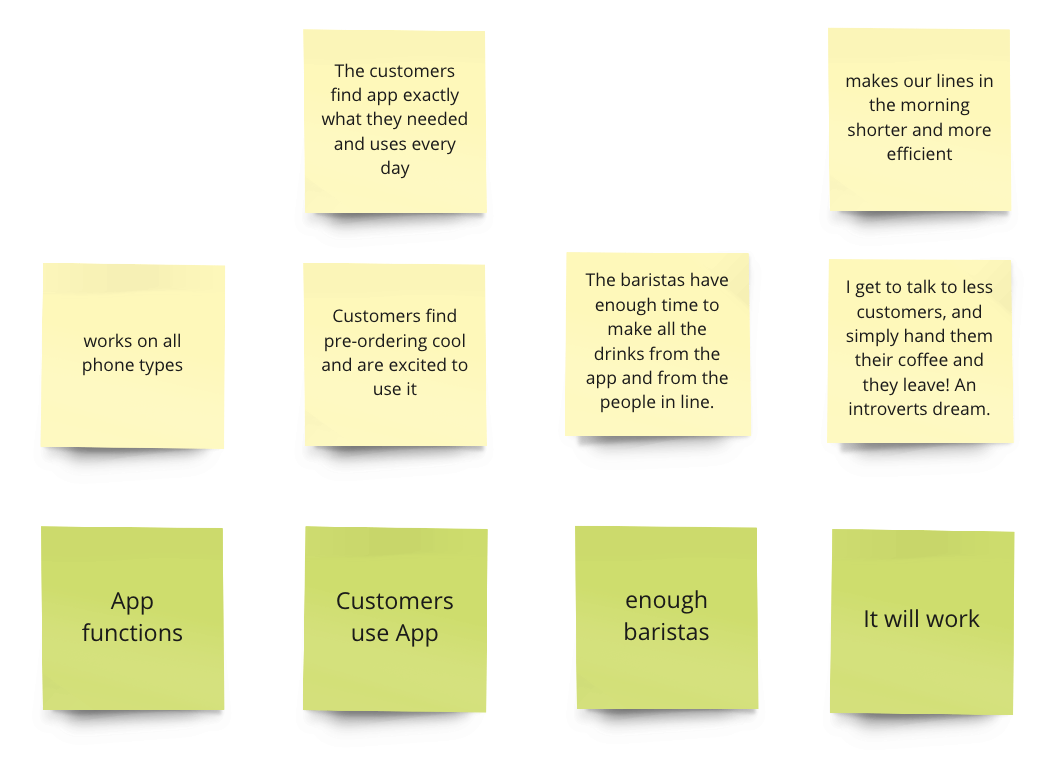
- Tell the group: “We get back in the time machine. This time, when the door opens, it’s <the same date> but in a parallel universe. Everything went so badly we wish we’d never started. What’s it like? How did it go so wrong?”
a. Ask everyone to write down what they can see and hear in this world – and what went wrong! One per yellow sticky. (3–6 minutes)
Tip: remind people to visualise being in the future, looking back at the past. Try exaggerating how bad things are.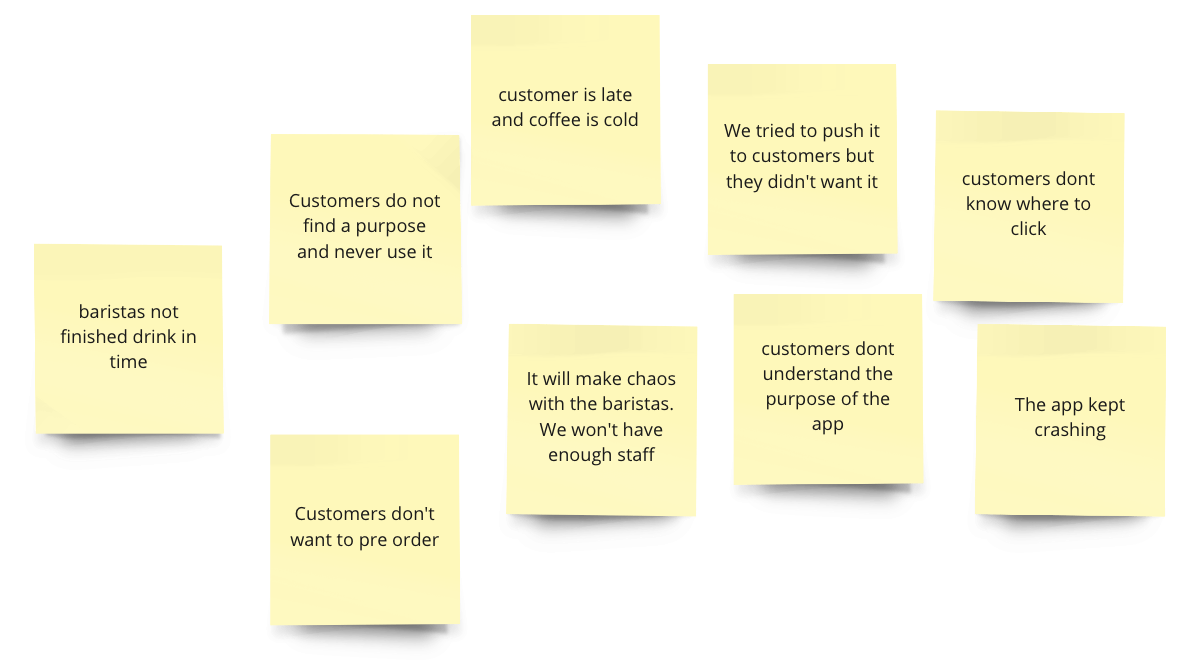
b. Repeat the quiet clustering, then summarise each cluster in 1–5 words on an orange sticky. (10-15 minutes)
- Move the green and orange summaries to a new area on your workspace. Pair up greens and oranges that are natural opposites, then add an opposite for any that don’t have one. For example: people want it/people don’t want it. (3-5 minutes)
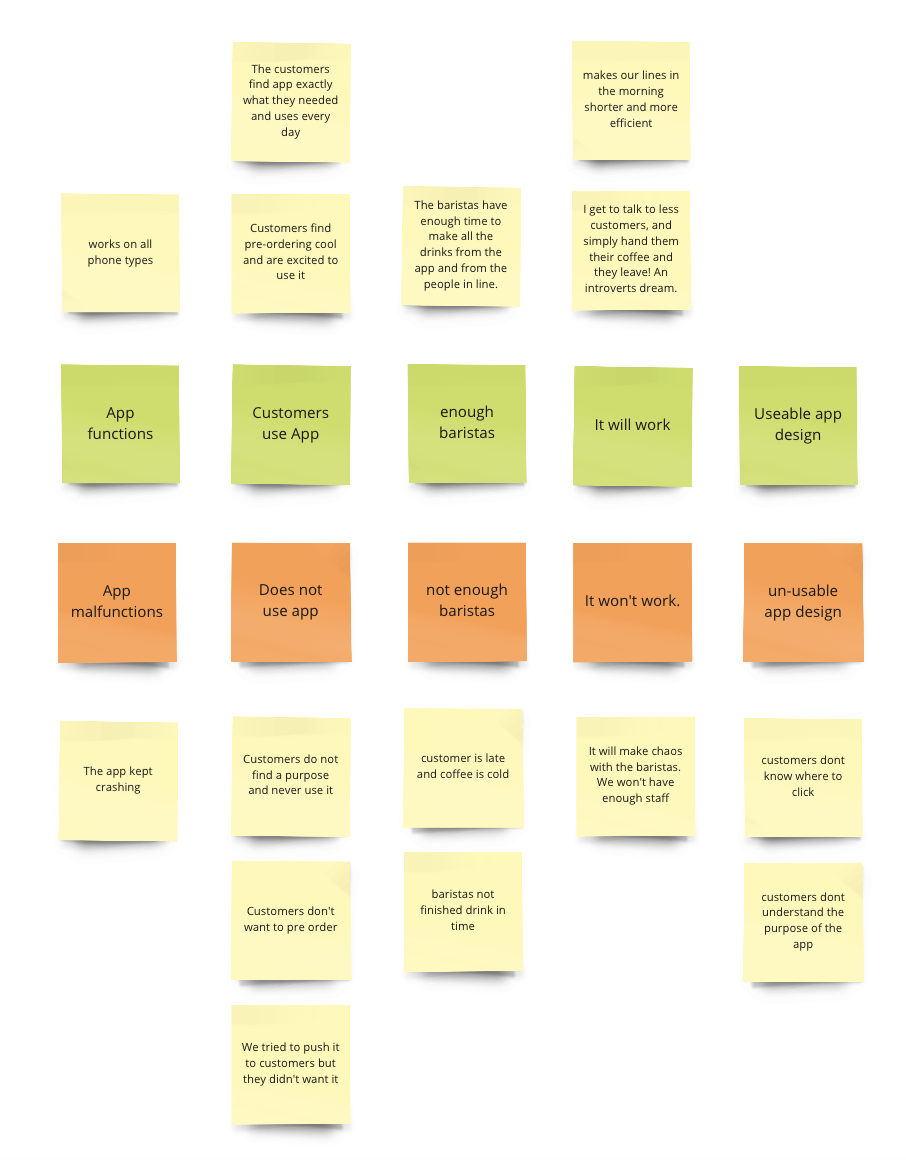
- Ask everyone to vote for the three orange stickies they find scariest: outcomes that are both plausible and severe. Notice differences in fears between people. Choose the one you will test out first in the next activity. (5-10 minutes)
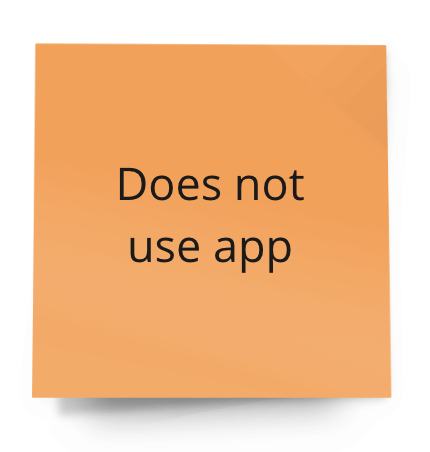
⬇️ Now you know the teams shared fears, and you can see the biggest risks. In the next tactic, take the scariest fear you voted on to inspire the direction of your Multiverse Map.
2
Use Multiverse Map to imagine the future
Use Multiverse Map to imagine the future


🧠 What’s the goal? In a potential customer’s shoes, tell the story of what they’ll see and do with your innovation in the best and worst universes. Then you can spot – and amplify – the behaviours that are critical to success.
👀 Why it’s important: Teams obsess over the work that goes on behind the scenes of an innovation; customers only care if it can help them make progress with their struggle. Your story will cover a person finding, buying and using your idea (or not) to test how coherent your idea is.
💡 Tip: the end result of this activity might seem overwhelming but when you follow it step-by-step you will be surprised how straight forward it is.
Instructions
- In the last tactic, you chose the scariest possible future to now use as the topic of inspiration. We will use “No one uses the app” as our example.

-
Ask: “When our work is done, in the best possible world, what will a future customer experience first?” Write the answer on a green sticky.
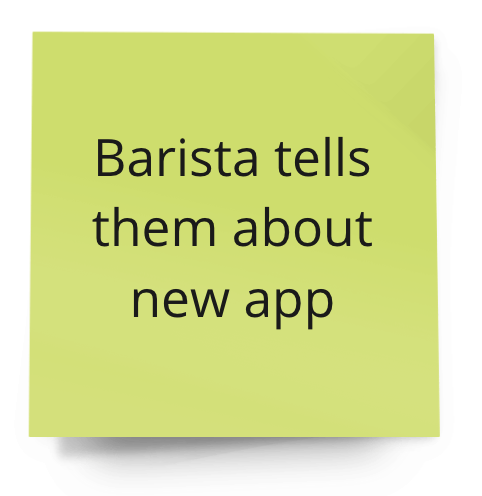
-
Ask: “And in the best possible world, what’s the very next thing they do or see?” Write that on a green sticky to the right of the first.
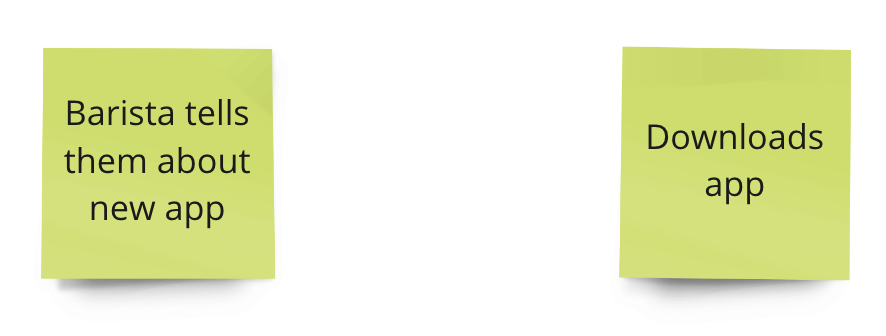
-
Ask: “But in the worst possible world, what do they do or see instead of that?” Write the answer on an orange sticky underneath the green one you just wrote.

-
Repeat steps 2 and 3, describing what the customer sees and does, until the green stickies show complete success for them (and you). Join your stickies up with arrows to make the flow easier to follow.

Tip: you can add multiple green or orange options for each step, but if a step has more than three options, break it into smaller steps. Remember: clarity comes from focusing only on the very best and very worst worlds.
-
To test whether your story makes sense from your potential customer’s viewpoint, read it out as yourself. Rewrite, rearrange and add stickies until it makes sense. For example: “I order the drink…oh but wait, I need to put my name in the order too”.
-
Add percentages to the arrows to indicate how likely each branch is. You can use estimates until you get real data from analytics or probes. Finally, add numbers above the green stickies to show how many of an initial batch of customers might get through the story.

⬇️ In the next tactic, you will be use your Multiverse Map, adding your Pivot Triggers directly to it.
3
Use Pivot Triggers to spot change signals for future development
Use Pivot Triggers to spot change signals for future development


🧠 What’s the goal? Before you start the work, agree what you’ll need to see from the world for you to feel confident about investing in your idea.
👀 Why it’s important: Your idea’s success always depends on the behaviours of people and systems that are outside your control. So before you commit fully to an idea, set pivot triggers with your team. Agree how much of those critical behaviours will be enough for you to keep going. Promise to pause and rethink if you’re not seeing them.
💡 Tip: “But what will we pivot to?”. If you knew that, you’d already be doing it. What you learn from taking action now will lead to ideas you can’t have today. A pivot can mean anything from a tweak of wording to starting again with an entirely new idea.
Instructions
- In the last tactic, you created a Multiverse Map which you will use for this tactic, make sure to have it out and ready to add to.
- Gather your team around your workspace and record your answers to these questions on stickies:
a. What behaviours do we need to see from a customer or a system to know our idea is successful in the future? For example, people download app and use it.
b. How much of each behaviour will be just enough to give us confidence to keep going with our idea? For example, 25% of customers who are introduced to the app use it to pre-order their coffee. - Combine the answers to create Pivot Triggers: “We’ll pivot if we don’t see [X amount of the agreed behaviour] by [date] when we [test a tiny, rough version of our idea].”
Edit the sentence so it’s easy to read.
- Share your triggers with everyone who would be affected by a decision to pivot. Set a date to check in, then get to work.

⬇️ In the next tactic, you will take your pivot triggers and find a viable Behavioural Probe that you could use to test right away. These two tactics work hand-in-hand.
4
Use Behavioural Probe to test out your bigger idea
Use Behavioural Probe to test out your bigger idea


🧠 What’s the goal? Sell a tiny, pretend or alternative version of your idea before you actually build it, so you know if it has legs.
👀 Why it’s important: While innovators care a lot about the inner workings of their innovation, customers only care about the promise and the results. This means you have lots of different ways to test your ideas in the market – without needing to build any inner workings.
When he wanted to launch a new dessert, the inventor of Gü puddings didn’t use a kitchen – he designed and printed some empty boxes. Then he snuck them onto a supermarket shelf and watched what shoppers did.
💡 Tip: make sure the prototype you make or do is quick and easy. Less time to put into action the better!
Instructions
- In the last tactic, you figured out what numbers or results would cause you to pivot from your plan. The question now is: What tiny, rough version of our idea could we do today to be able to see a form of those behaviours? This is usually mostly work you’ll need to do anyway. For example, baristas could ask people if they want to pre-order drinks for tomorrow on a sheet of paper.
- Brainstorm how you could apply each of these behavioural probes to your innovation and what it could teach you:
a. Pre-alpha partnership: customers spend time working with you to develop your idea, in return for early access.
Example: Identify a group of regular customers and invite them to co-create the pre-order feature with you. Ensure they have early access to the new feature in return for their insights and feedback on usability and functionality.
b. Concierge service: customers pay to get the results that an innovation will deliver, but it’s openly done by people.
Example: Initially manage pre-orders manually. Have a dedicated team take orders via phone or chat, and manually input the orders into your system, communicating transparently about this process to the participating customers.
c. Movie magic: bring your innovation to life as a video and ask people to sign up for more info, or place a pre-order.
Example: create a promotional video showcasing the ease and benefits of using the pre-order feature. Share the video on social platforms and invite viewers to sign up for newsletters or register to get early access when the feature is live.
d. One-time offer: offer your idea on a limited basis to gauge interest. Airbnb’s founders first offered their own apartment.
Example: have a list set up in the store for people to sign up with.
e. Infiltrator: sneak an empty box onto the shelves of a real store to see if people will pick it up. Then talk with them.
Example: make a poster of the app with a QR code that links to a Google drive page where customers can enter their order.
*Read more examples of Behavioural Probe’s on your card in your deck - Choose the most promising behavioural probe to try, or combine a few. Set Pivot Triggers and put it into action!
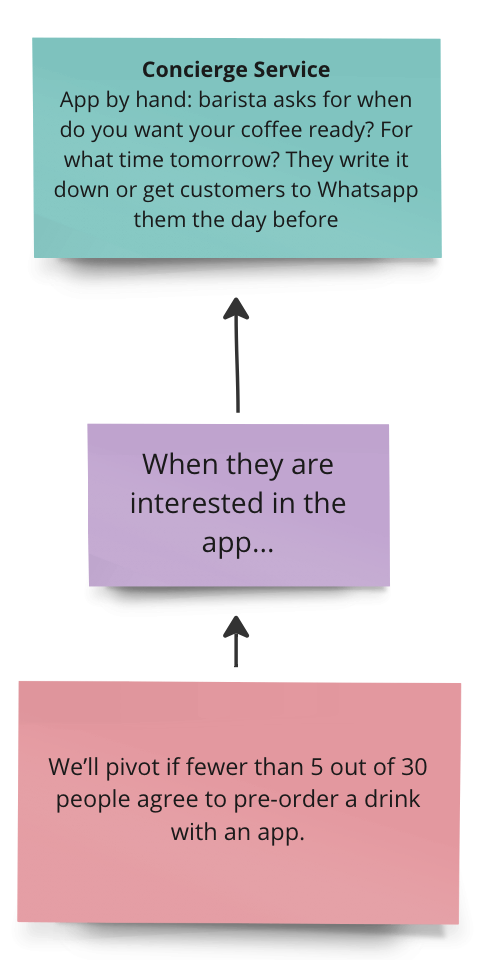
- Make sure the Probe is added to your Multiverse Map.
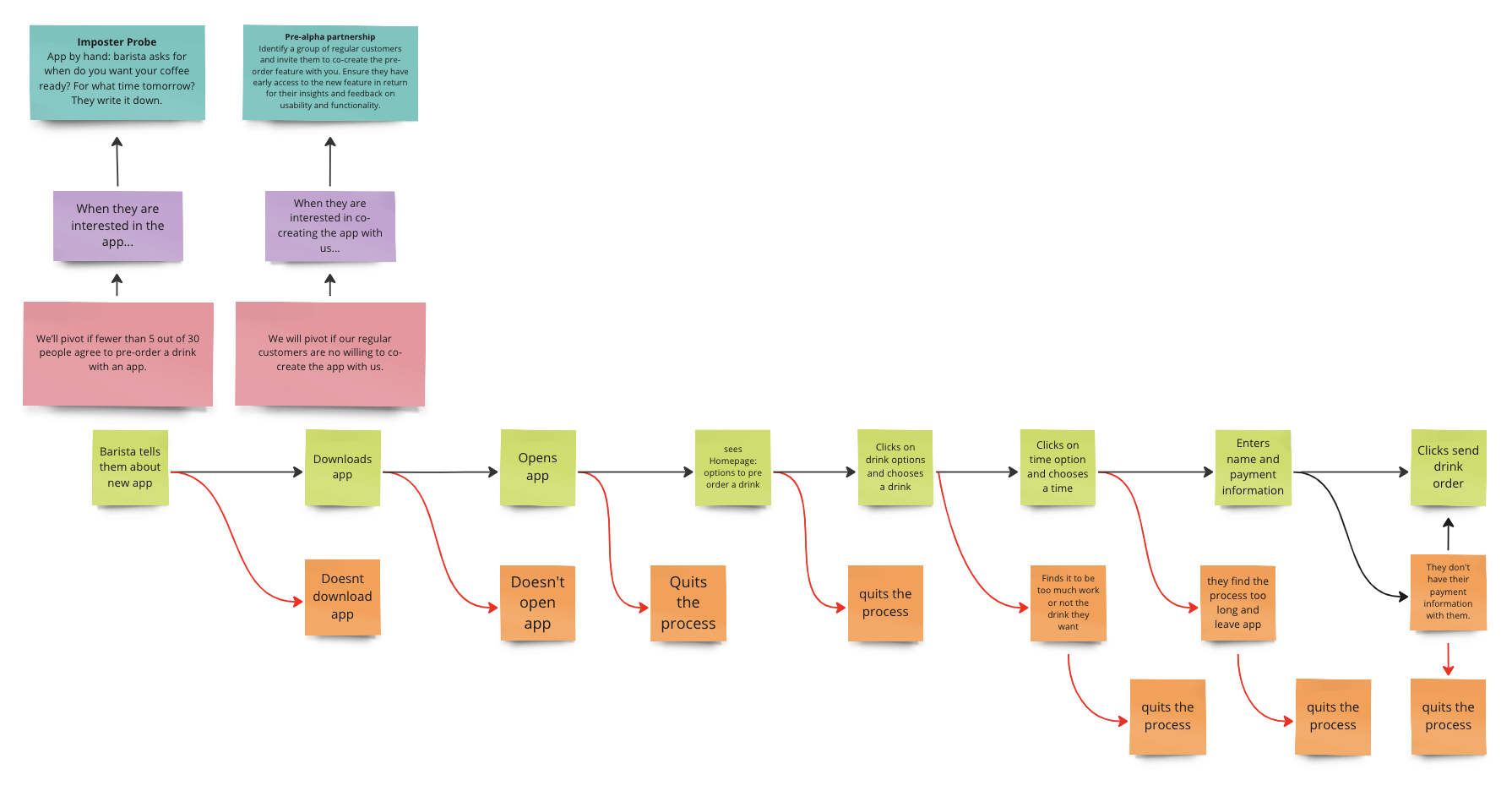
⬇️ In the next tactic, after you have tested with your chosen Behavioural Probe(s) you will then take the signals you observed from the process and create an Anatomy of an Insight.
5
Use Anatomy of An Insight to reflect and broaden your thinking
Use Anatomy of An Insight to reflect and broaden your thinking
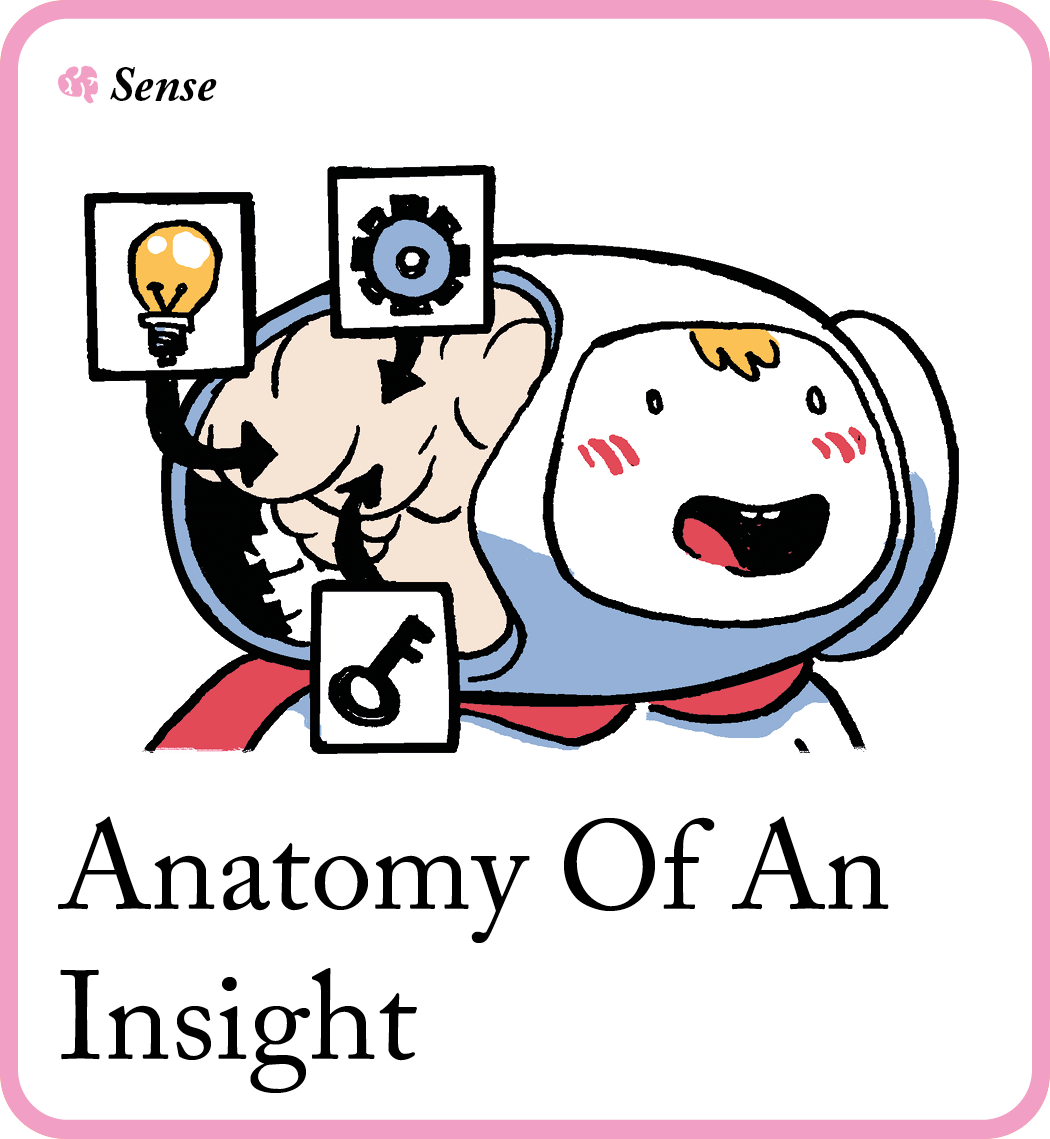

🧠 What’s the goal? Tell more than one story about the situation you’re observing, so you can decide on your best next action.
👀 Why it’s important: This tactic helps you separate what you’ve seen or heard (signals) from what you believe it means (stories) and what you think you should do next (options).
“Insights can be described as unexpected shifts to a better story… they transform how we see and feel about the world. Once they are gained, we cannot go back.” – Gary Klein
💡 Tip: try this alone for the first round to develop the skill… but the power of this tactic grows exponentially when you do it with a team.
Instructions
-
In the last tactic, you tested out your idea with a Behavioural Probe. Now it is time to take the things you learned from testing and map it out.
-
Set the scene: “Our exploration gave signals for changing direction: what the person (or people) said and did, and what occurred to us as we investigated. Given all the signals we have, we need to decide: do we continue with, abandon, or adapt our idea?”
-
On yellow stickies, have the group (or yourself) list signals observed. In this example we focus on three (but you will want to bring in all of them):

-
Say “Given those signals, what’s an option for an action that we might take next?” Write these options on blue stickies.

-
Ask: “What story explains why that option is a good response to those signals?” Write it on a pink stickies.

-
Say “That story we’re telling ourselves limits what we can see and do in the world. Write at least two alternative stories that could explain the signals.” Write them on pink stickies. “As you add stories, also add any new signals you realise you’d forgotten.” Write them on a yellow stickies.
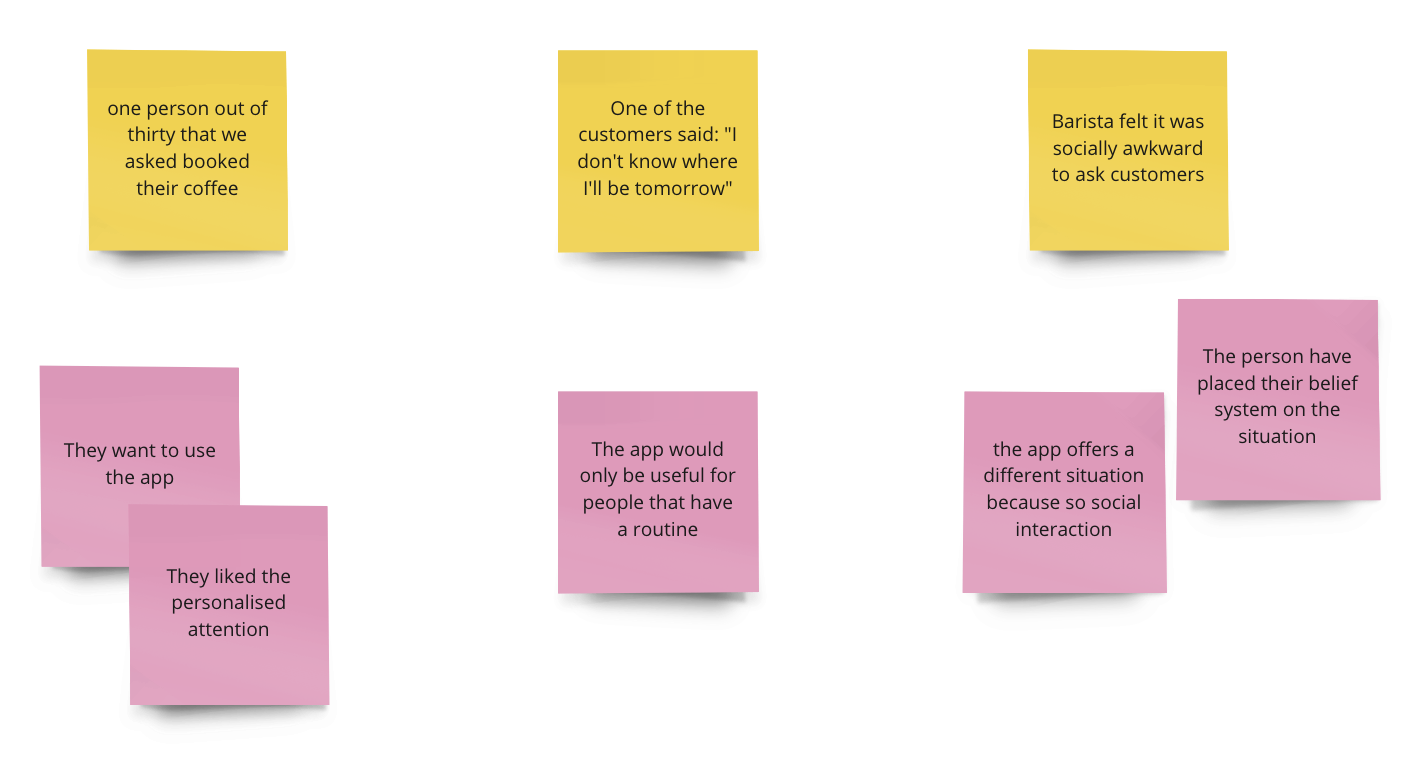
-
Say “For each new story you added, what other options for action would make sense?” Add those on more blue stickies.
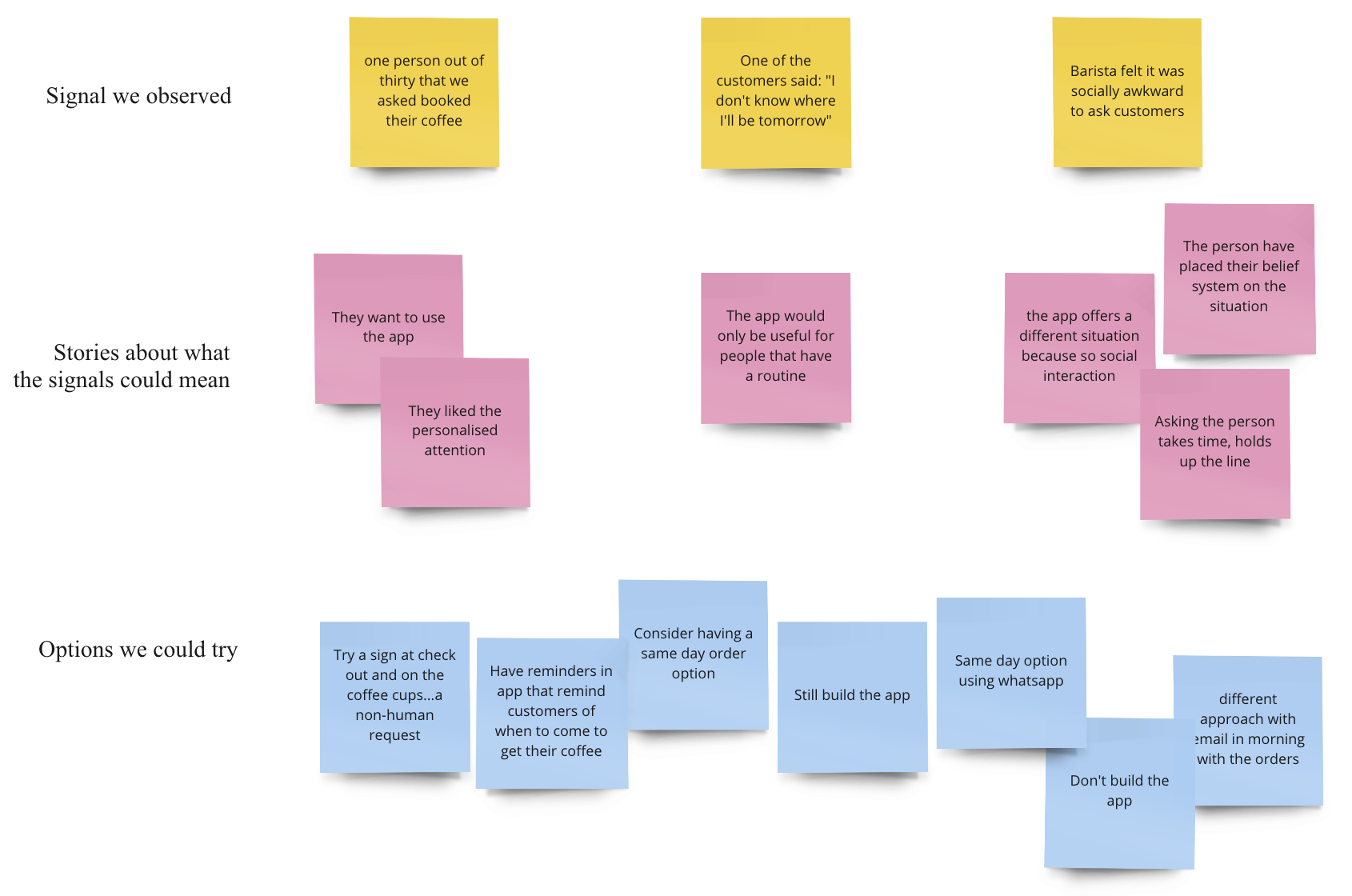
-
Have the group vote on the stories that resonate most with them. The pattern of voting usually reveals a dominant theme or two to explain what might be going on.
-
In light of the vote, revisit your original idea. This is the key question for all of these activities: do you feel you want to keep going, abandon it for a better idea, or adapt it?
⬇️ Now that you have done all five tactics, ask yourself the question above and then choose the tactic from this loop that matches the need.
What ways can I use this recipe?
- 10-minute challenge: choose the tactic that scares you the most and try it out with a friend or colleague. Don’t overthink it! If nothing scares you, lucky you. Start with the Time Machine.
- Take your time: do all five tactics in order. Each tactic has a time estimation, which allows you to figure out if you will do all five as a full-day experience or break it up over a couple of days.
Some tips
- Don’t make it hard. Take tiny, bold steps every day instead of changing everything all at once.
- Mistakes are important. They’re how you learn! So don’t try to be perfect, but do pay careful attention to failure.
- You are not your work! Don’t think “I need to get this right”, think “I want to find out as fast as possible what I can fix to make the experience for the user better.”
What next?
Congratulations you have completed your first round of How to do Probe-based Innovation! But this is only the beginning. Time to figure out if you want to abandon your idea, keep going, or adjust it.
Remember, just because you have tested your chosen Behavioural Probe once, it doesn’t mean you’re done. This is only the beginning! Keep testing and then using Anatomy of an Insight. And of course, checking in with your Pivot Triggers.

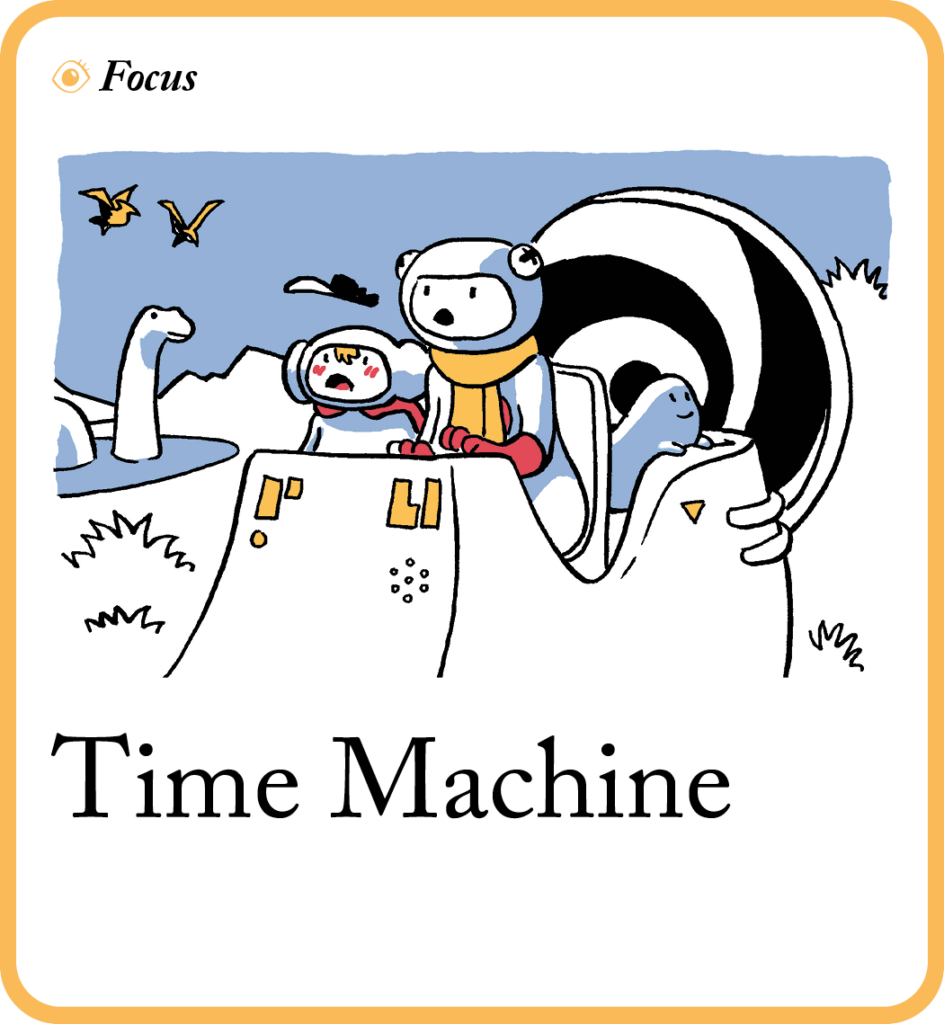
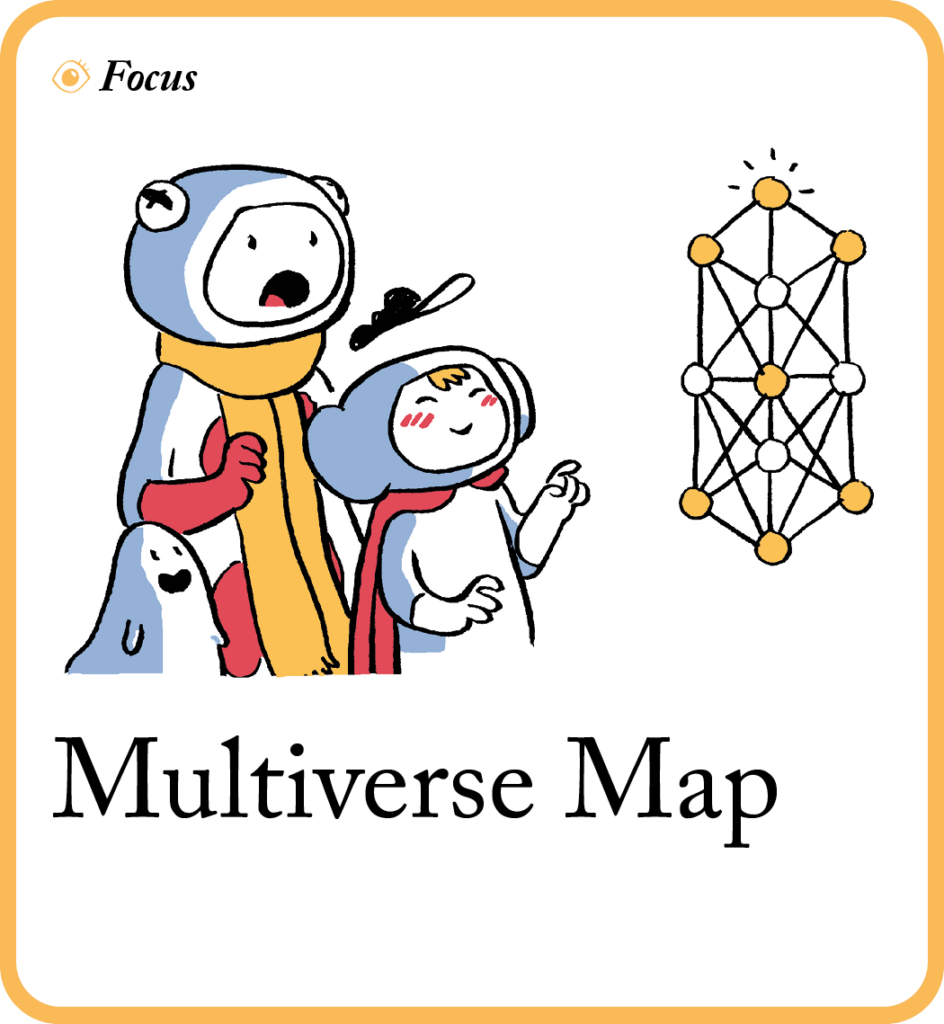
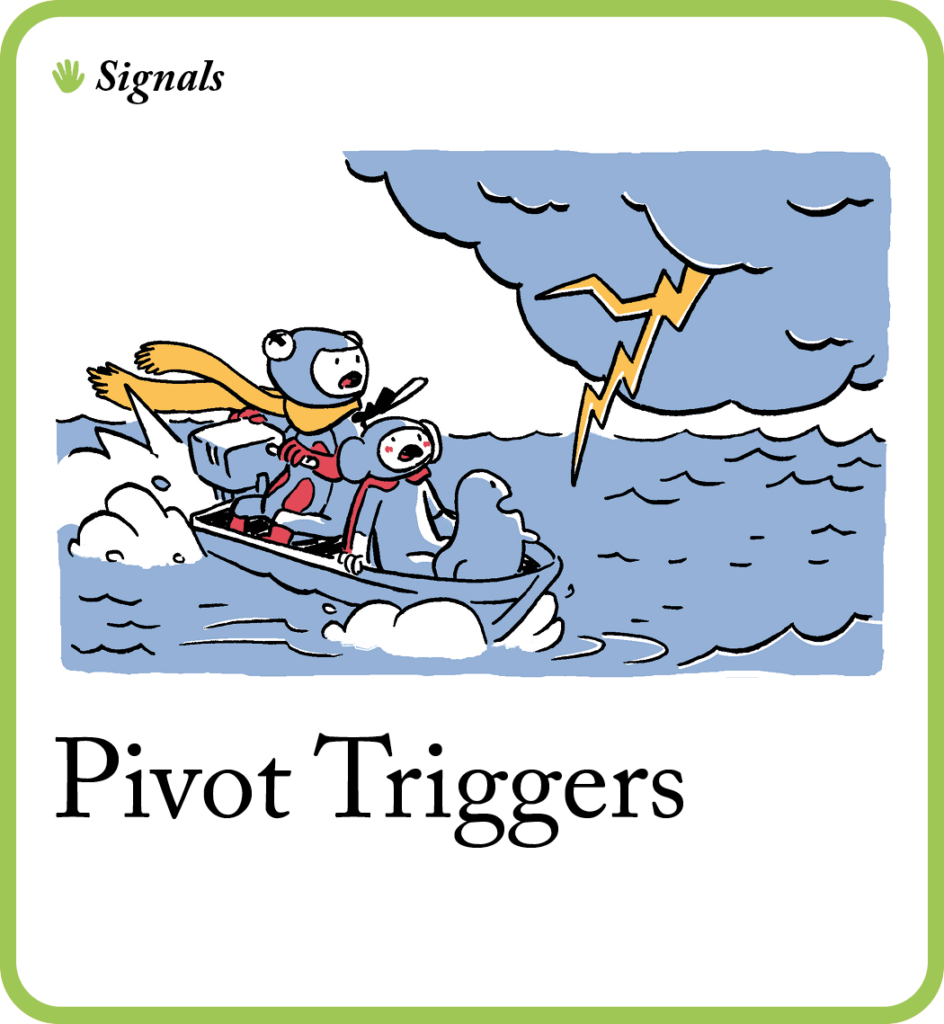
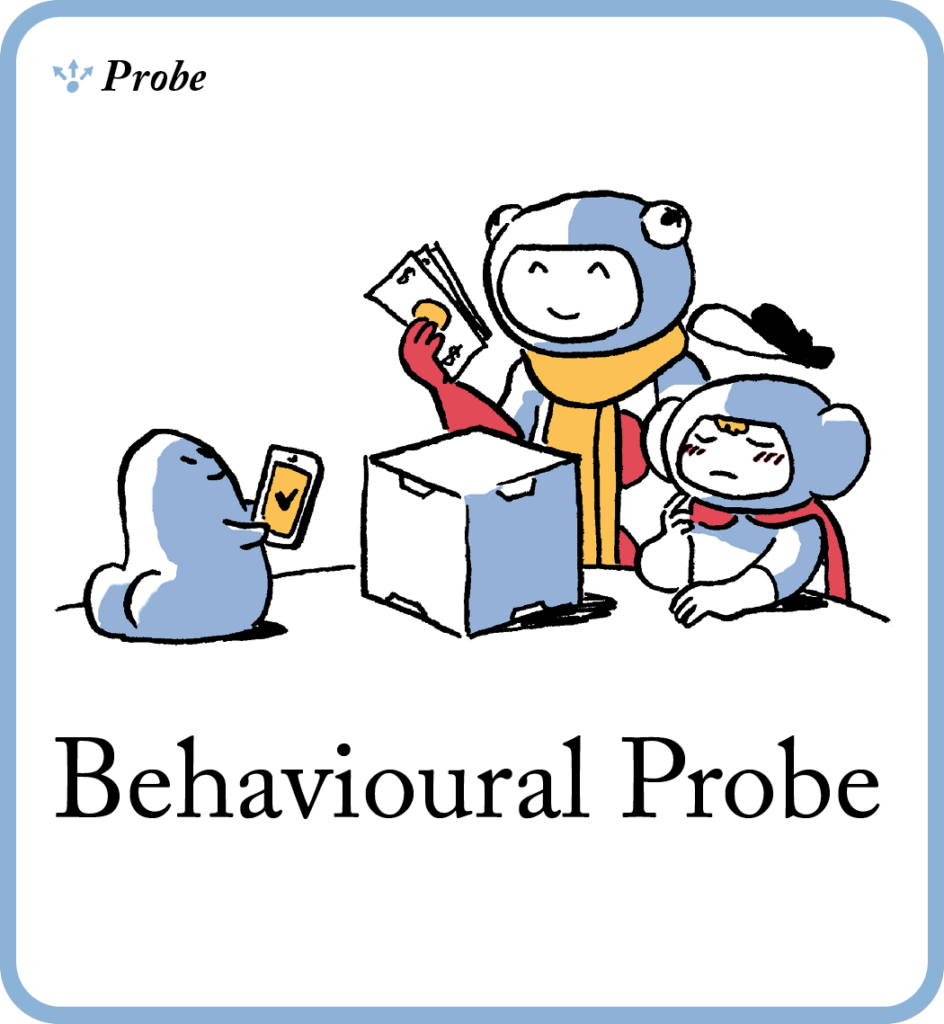
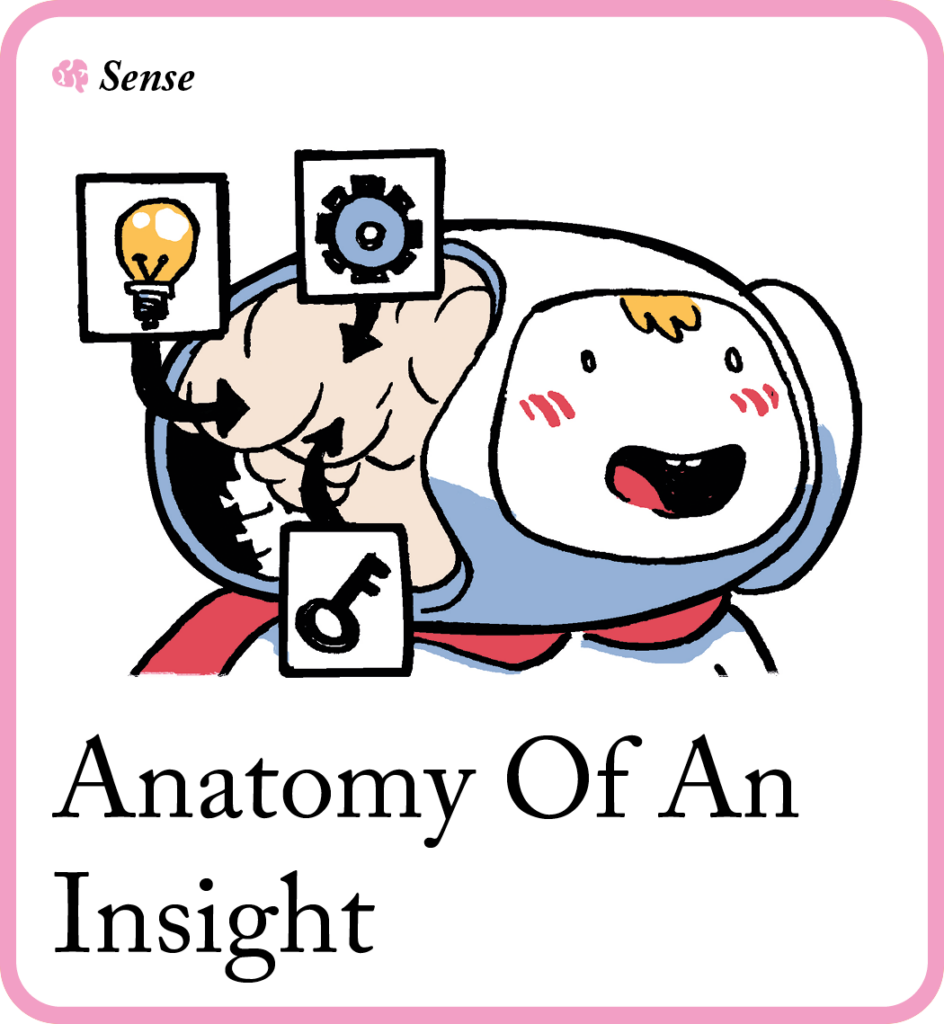
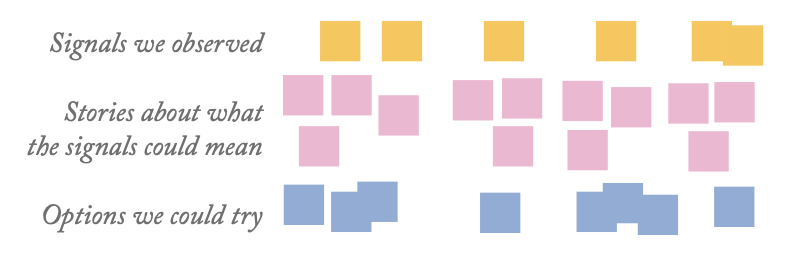
If you leave us your email, we'll let you know if we update this guide based on your feedback.